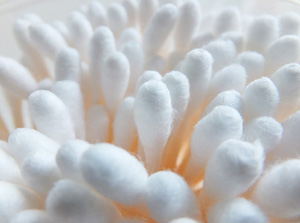Washington, May 9: Parents, take note! Cotton buds may do more harm than good, say scientists who found that using them can cause severe injuries to children.
 Researchers found that over a 21-year period from 1990 through 2010, about 263,000 children younger than 18 years of age were treated in hospital emergency departments for cotton tip applicator related ear injuries - that is about 12,500 annually, or about 34 injuries every day.
Researchers found that over a 21-year period from 1990 through 2010, about 263,000 children younger than 18 years of age were treated in hospital emergency departments for cotton tip applicator related ear injuries - that is about 12,500 annually, or about 34 injuries every day.
"The two biggest misconceptions I hear as an otolaryngologist are that the ear canals need to be cleaned in the home setting, and that cotton tip applicators should be used to clean them; both of those are incorrect," said Kris Jatana from the Nationwide Children's Hospital in the US.
"The ear canals are usually self-cleaning. Using cotton tip applicators to clean the ear canal not only pushes wax closer to the ear drum, but there is a significant risk of causing minor to severe injury to the ear," Jatana said.
Researchers found that the majority of injuries occurred as a result of using cotton tip applicators to clean the ears (73 per cent), playing with cotton tip applicators (10 per cent), or children falling when they have cotton tip applicators in their ear (nine per cent).
Most of the injuries occurred when the child was using the cotton tip applicator by themselves (77 per cent), followed by injuries that happened when a parent (16 per cent) or sibling (6 per cent) used the cotton tip applicator to clean the child's ear.
About two out of every three patients were younger than eight years of age, with patients aged 0-3 years accounting for 40 per cent of all injuries, researchers said.
The most common injuries were foreign body sensation (30 per cent), perforated ear drum (25 per cent) and soft tissue injury (23 per cent).
Foreign body sensation was the most common diagnosis among children aged 8-17 years, while perforated ear drum was the most common among children younger than 8 years of age.
Almost all of the patients seen in emergency departments for these injuries (99 per cent) were treated and released.
In more serious cases, damage to the ear drum, hearing bones, or inner ear, can lead to dizziness, problems with balance, and irreversible hearing loss.
"These products may seem harmless, but this study shows how important it is that they not be used to clean ears," Jatana said.
The findings were published in The Journal of Pediatrics.





Comments
Add new comment